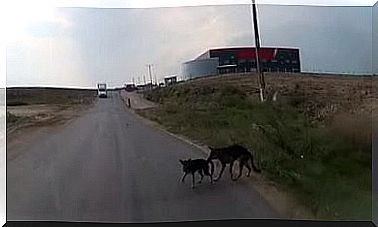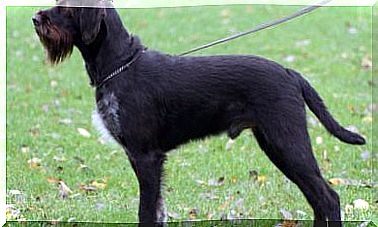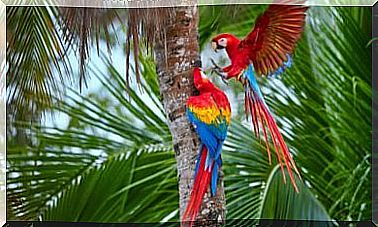The Elusive Black Stork
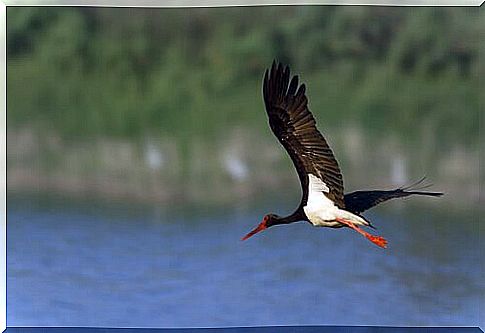
Much less known than its white relative, the black stork is one of the most elusive animals of the Iberian fauna and can be found in Africa, Asia and Europe. Its appearance is very particular and recognizable, however, it is very shy and rare, which makes it unpopular.
How is the black stork?
The Black Stork ( Ciconia nigra ) is a little known ciconiiforme bird ; while the white stork can be found in belfries and urban centers, the black stork is a very elusive bird.
It makes its nests in isolated areas, surrounded by forest and also in areas that have water nearby.
Its plumage is very characteristic; she has dark tones on her upper body, with an iridescent plumage. In sunlight, it reflects green and even violet tones.
The beak and legs become reddish with age, until they turn blood red in the adult animal. It has white tones on the lower parts of the body and, even during flight, black predominates.
Where does the black stork live?
This animal can be found in much of Africa, Asia and Europe – from eastern European countries to Spain and Portugal.
This animal is a migratory bird that travels to Africa, something normal in the behavior of storks.
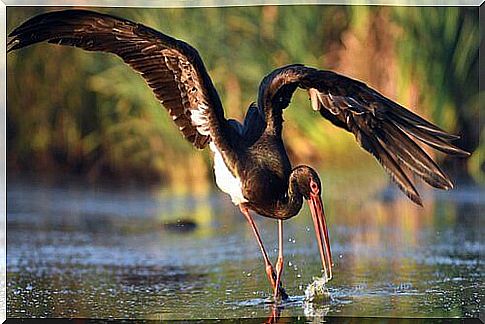
However, there are populations that spend the winter in Spain, specifically in Doñana, Extremadura and the Tiétar valley.
However, some black storks spend year round in Spain, thanks to its warmer temperatures. On the other hand, their habitat depends on time.
During the summer, it can be found in wooded areas and riverbanks with rocky outcrops. In winter, it appears in dams and rice fields.
How does it behave?
Their nest is made of twigs and moss, and rock nests are often reused.
As for eggs, we can say that they lay two to six white eggs, which are incubated for five weeks. The puppies are cared for by both parents, who will start flying after two months.
They are carnivorous animals, whose main diet is fish, although they also consume small mammals, reptiles, crustaceans, birds or insects.
It usually spends its days in wetland areas and inspects the land for these animals, which it hunts with its beak, like a harpoon.
Like other birds, such as the white stork and carrion birds, they do not despise human waste.
Even so, it is rare to see them in landfills, as, due to their shyness, they prefer to hunt for their own food.
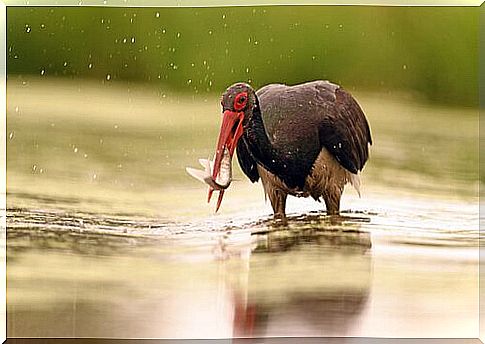
What is its state of conservation?
Regarding their threats, the main one is the human pressure on their nesting areas : they are animals much more sensitive to human intervention in their habitat. Furthermore, noise, pedestrians and pollutants stress them.
Forestry activities, rivers and power lines also pose great risk.
These animals have been seen in the swamps of Guadalquivir, but infrequently.
There are numerous conservation projects, such as the one started in Extremadura.
Despite this, there are still many examples : it is estimated that there are between 12 thousand and 20 thousand of them in Europe; in Spain there are more than 800.
However, in Denmark it is considered practically extinct, and in Germany, unfortunately, only 50 couples remain.


